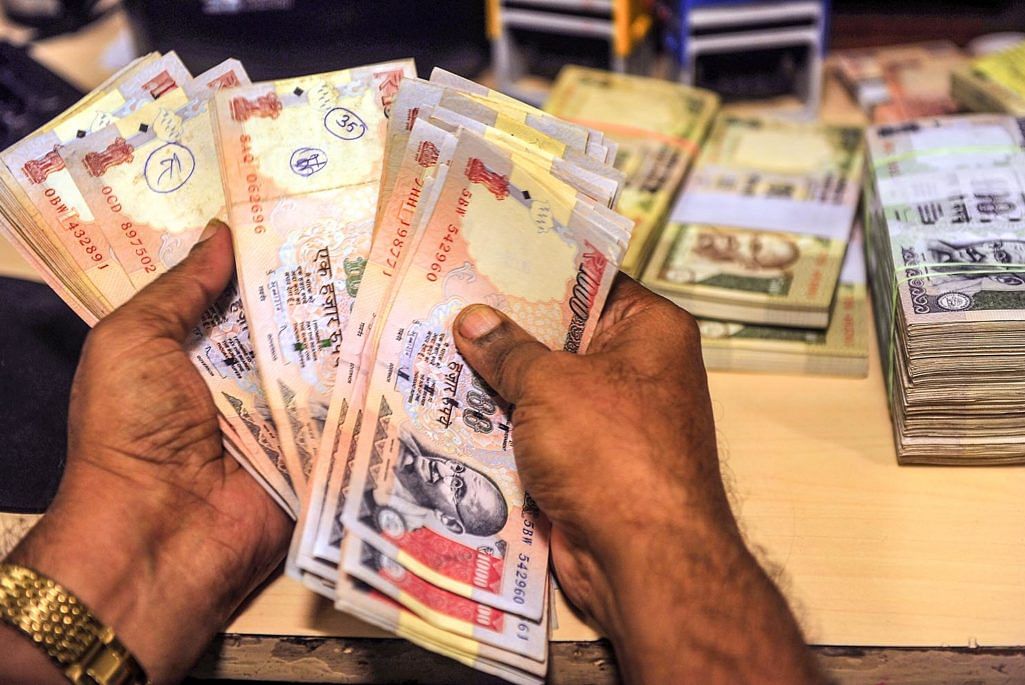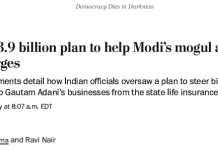
Rohini Mohan India Correspondent
- PUBLISHEDSEP 26, 2021, 4:47 PM SGT
BANGALORE – With unpaid corporate loans at a record high in India, the government has set up a “bad bank” to resolve such loans, paving the way for a major clean-up of the banking system.
Flush with 30.6 billion rupees (S$560 million), the new institution will take over bad loans from commercial banks amounting to two billion rupees, a quarter of the total stressed loans in the country.
Officially called the National Asset Reconstruction Company Ltd (NARCL), it will help the banks clear their balance sheet and focus on core business and lending activities.
A bad bank takes over the loans, usually below the book value, manages them and tries to recover the money over some years.
India’s banking sector has been plagued with crises in recent years, from a multimillion-dollar fraud in the giant Punjab National Bank in 2018, corporate mismanagement in Yes Bank, and the unpaid loans fiasco at Lakshmi Vilas Bank, which led to its takeover by Singapore’s DBS Bank last year.
Unpaid loans in public sector commercial banks have also been ballooning for at least a decade. The rise was further fuelled during the Covid-19 pandemic, which saw job losses and ailing businesses.
The amount now stands at over eight trillion rupees. At least 75 per cent of these are defaulted corporate loans.
In her Feb 1 budget speech, Finance Minister Nirmala Sitharaman mentioned the government’s intention to set up asset management and reconstruction companies that together constitute a bad bank to provide financial stability to the banking sector.
Economist Vivek Kaul explained that bad banks have been set up in countries like the United States, United Kingdom, Japan and Malaysia to allow the banks to focus on their core business rather than on rescue and recovery.
Among the world’s first bad banks was the one set up in the US in 1989 to sell the assets of around 750 bankrupt savings and loan institutions or thrifts that were worth nearly US$450 billion. It dissolved in 1995 after meeting its objectives.https://83261585029588083d29c698968828e3.safeframe.googlesyndication.com/safeframe/1-0-38/html/container.html
The US bad bank was a private sector experiment with no capital from a government entity. India’s bad bank, however, involves initial investment by the government.
Another difference lies in the types of bad loans. “Much of the Western experience of bad banks has been around toxic mortgages or home loans which had been defaulted on,” said Mr Kaul.
In India, however, an overwhelming 75 per cent of bad loans are defaulted corporate loans, involving a consortium of banks that had given loans to corporations to finance large industrial or infrastructure projects.
“This increases the number of stakeholders. Hence, it makes the entire situation much more difficult to resolve,” added Mr Kaul.
He said experiences in countries such as Mexico, Greece, South Korea, Argentina and Italy have shown that bad banks have rarely worked in settings where industrial, corporate and conglomerate-level bad loans dominate.
Bad debt surge threatens India’s financial stability, central bank warns
Biggest rescue of India bank will deepen lenders’ funding woes
Experts point out that in order for it to work, a bad bank must have enough capital to purchase the bad loans from banks, and the ability to sell them in future.
Mr Kaul said there are 27 asset reconstruction companies in India at the moment, but most of them do not have much capital to buy bad loans. Unlike them, the bad bank is owned and funded by the Indian government and some public sector banks.
“Many public sector banks have in the past been reluctant to transfer their non-performing assets (bad loans) to private asset reconstruction companies, fearing investigations or not trusting their capitalisation. But in the case of a bad bank run by the government, banks may participate more readily, with a sense of safety,” an authority from a major public sector bank told The Straits Times on condition of anonymity.
He added that the present plan covers only two trillion rupees of the non-performing assets and only when they are sold can the bad bank claim to have achieved success.

Some experts insist that while the bad bank is a welcome move, other structural reforms must not be neglected. These include greater governance and supervision during the lending process, and stringent monitoring of loans for early detection of distress signs.
“At the end of the day… the government is bailing the banks out. To fix the root of the problem, the government should instead be going after banks for their bad lending practices,” said banking expert Hemindra Hazari.
Former central bank governor Raghuram Rajan was among the economists who are against bad banks.
In his book, I Do What I Do, he said it would be like “shifting loans from one government pocket (public banks) to another (the bad bank)… The reluctance to act would merely be shifted to the bad bank”.














